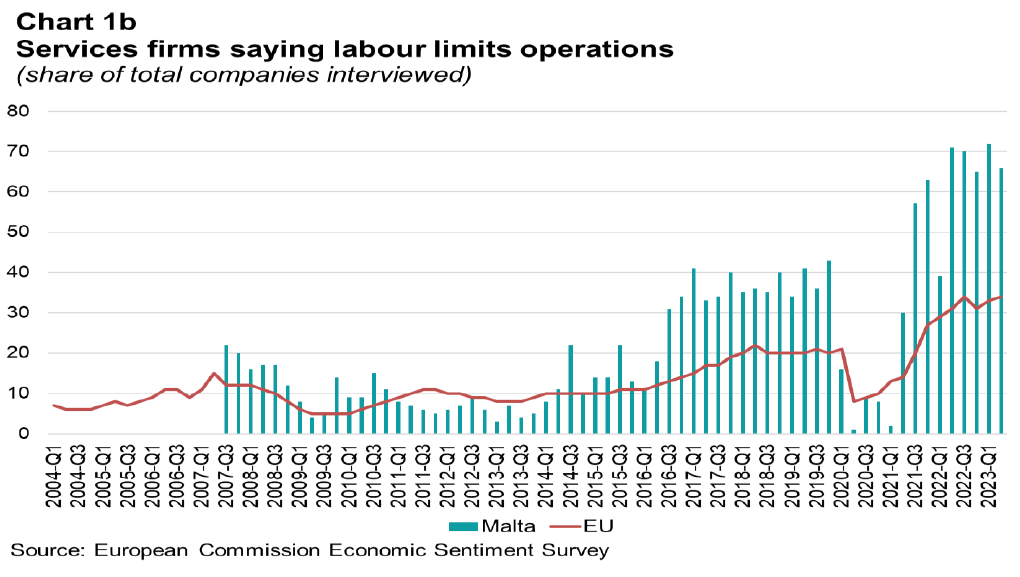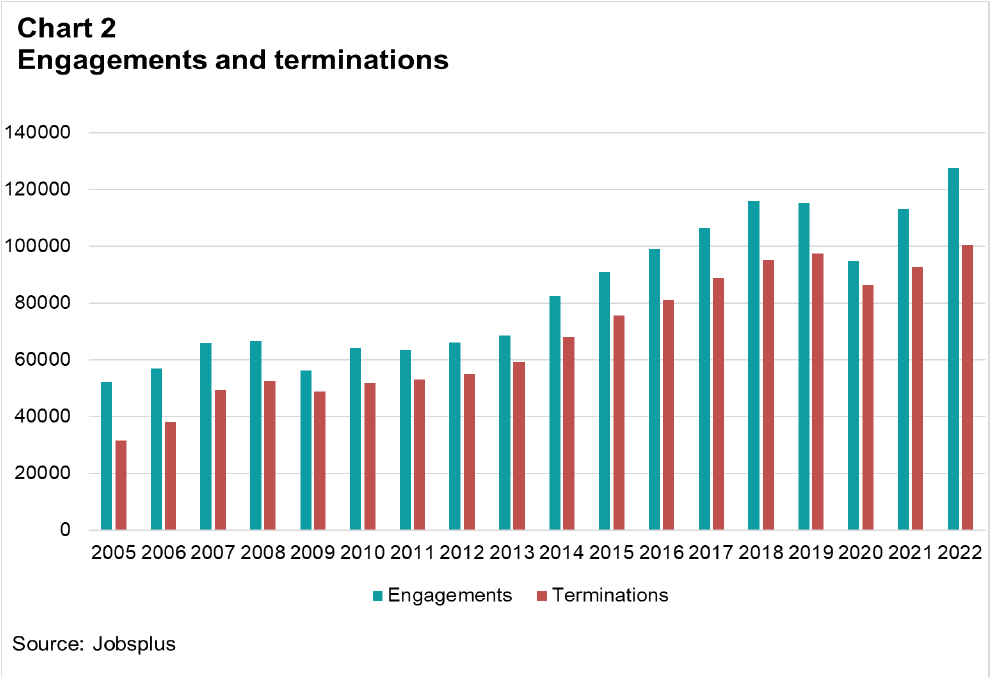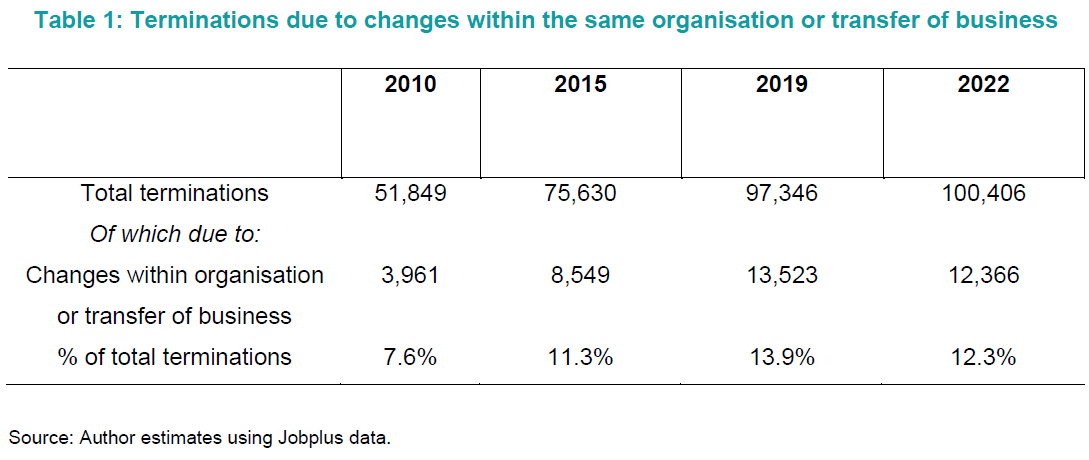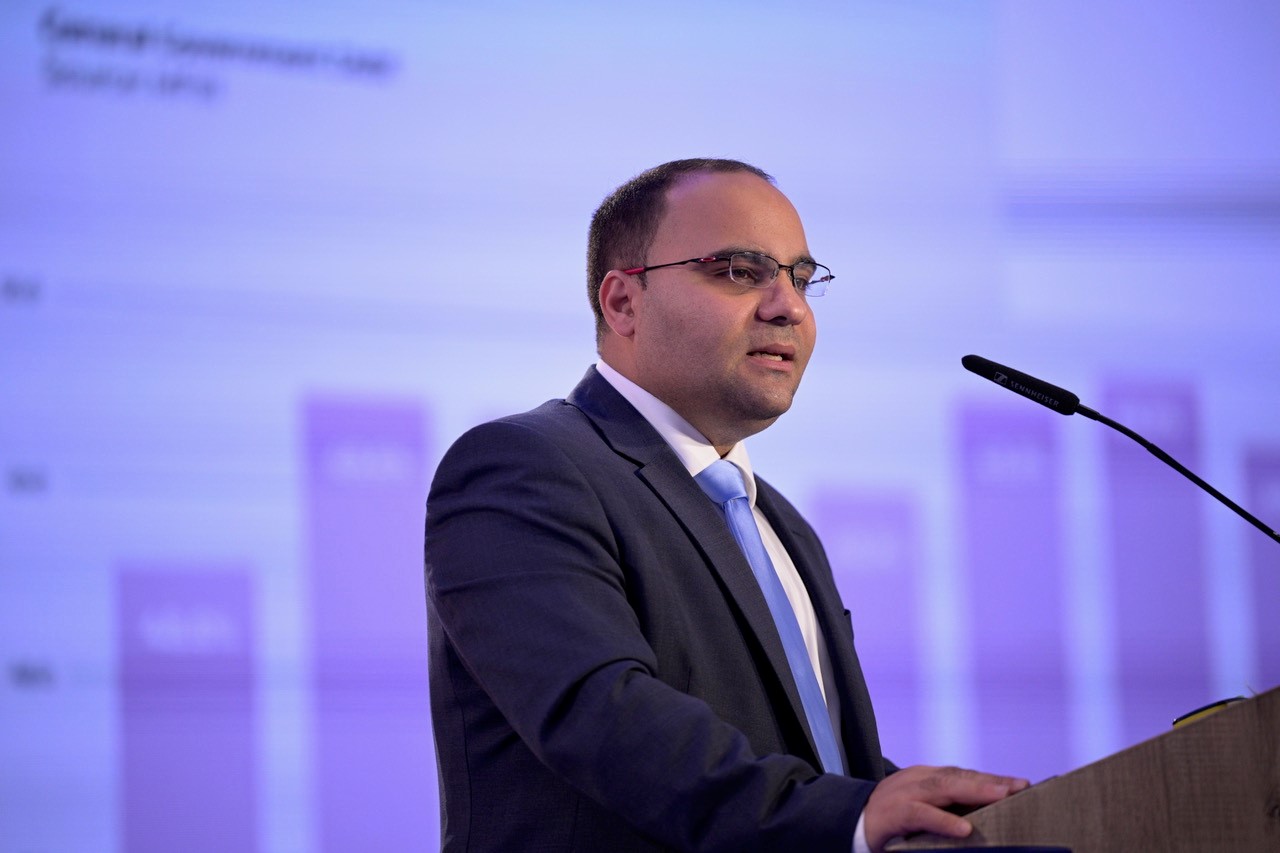A high labour turnover driven by a growing share of foreign workers, increased female participation in the workforce and growing services sector adds new challenges to labour-shortage stricken firms in Malta.
A policy note published by Aaron G. Grech, chief officer of the economics division of the Central Bank analysed JobsPlus data to paint a clearer picture of the situation concerning labour turnover. He looked at the number of engagement and termination forms received by the national employment agency, noting that data might overstate labour turnover, since they also involve changes in employment status (e.g., from a definite to an indefinite contract).
Nevertheless, the sum of engagement and termination forms were an all-time high in 2022, and labour turnover fell in absolute terms only twice, in 2009 and 2020. This is understandable considering that Malta’s labour supply nearly doubled from 158,000 in 2004 to nearly 292,000 in 2022.
Yet, while the country’s workforce balloons, businesses are increasingly indicating that a lack of workers is limiting their operations.

In relative terms, when looking at labour turnover as a percentage of employment, it was revealed that turnover rose from 53 per cent in 2005 to 83 per cent in 2022, and fell in four years (2009, 2011, 2019 and 2020).
Labour turnover was calculated by adding the number share of engagement forms as a percentage of employed persons, with the share of termination forms.
Labour turnover peaked in 2018, when it stood at 91 per cent.

While the number of engagement and termination forms tended to move in lockstep, the gap was narrowest in 2020, the year the COVID-19 pandemic broke out and the economy contracted.
It is also to be noted that while the annual change in net engagements and the annual change in employment is different, absolute change is different since many engagement and termination forms reflect changes in employment status.
So, if within a year a person is employed on a definite contract, and later adopts an indefinite contract with the same company, two engagement forms and one termination form is sent to JobsPlus, even if the person stayed with the same company.

Dr Grech estimated that the share of termination forms was due to changes within the same organisations of transfer of business has steadily climbed from 7.6 per cent in 2010, to 12.3 per cent in 2022.
Therefore, if these figures are considered, labour turnover was 61.7 per cent in 2010, rose to 72 per cent in 2010 and declined to 70.8 and 68.7 per cent in 2022 respectively.

A trend of recovery was also observed in the number of employers opting to stay with the same employer they had a year earlier, rising to 69.2 per cent, a similar rate to the UK, a country which was noted to also have a high dependence on foreign workers and similar labour market regulation.
Overall, four drivers were identified as catalysts for higher labour turnover, a larger presence of foreign workers, higher female participation, changing age structure of the workforce and higher share of service-based activities.
Administrative data suggested that in relative terms, Maltese workers were half as likely to be the subject of termination forms compared to foreign workers. High labour turnover among migrants was found to be primarily driven by third-country nationals.
The impact of foreign workers on labour turnover is significant especially in light of the fact that, the number of foreign workers increased from 5,231 in 2005 to 96,970 in 2022.
According to JobsPlus data, roughly 70 per cent of termination forms submitted for third-country nationals were for individuals who were employed for less than a year, with 29 per cent having been employed for less than three months.

Increased female participation in the workforce has also impacted labour turnover, especially prior to the acceleration of foreign worker inflows that took place from 2015 onward.
However, the gap in labour turnover narrowed rapidly.

The reason for higher turnover among women was due to a lack of free childcare services, so prior to 2014 women tended to leave work to take care of their children. Also, women tended to work part-time, which tended to be shorter contracts than full-time ones. Lastly there was a surge in unskilled women entering the workforce for the first-time or after a long career break with the introduction of make work pay policies.
Lastly, a younger workforce was also coupled with higher workforce turnover. Older workers were more likely to stay longer in jobs and less likely to be fired. Dr Grech noted that the sum of engagements and terminations of those aged 25 to 34 years old was equivalent to the entire workforce of that age group, while for those aged 45 and over was less than half.
While Malta’s population is ageing its workforce is getting younger due to a surge in female participation and also due to immigration. The consequence is a higher overall labour turnover.
Lastly, changes in the share of workers in different economic sectors has also had an impact on labour turnover.
Sectors involved in accomodation, and food, administrative support, and arts and recreation had a turnover rate of more than the entire workforce in the sector. The lowest turnover was observed in agriculture and fisheries, and public administration.
Two years since its birth, Moneybase features on Microsoft’s Customer Stories
Moneybase has now just been featured on Microsoft’s latest Customer Stories
Finance Minister confirms continuity of food and energy subsidies
Spending on food and energy subsidies as a percentage of the GDP will be at 0.7% in 2025
MHRA congratulates Glenn Micallef on EU role, highlights positive impact on Malta’s tourism and cultural sectors
The lobby group emphasised that Malta’s cultural assets and sports scene are key factors in attracting visitors and fostering economic ...






